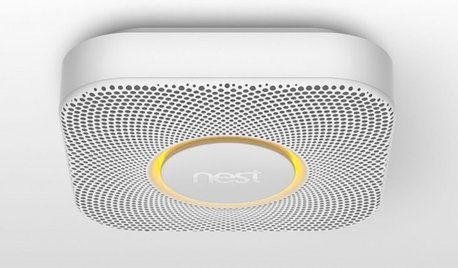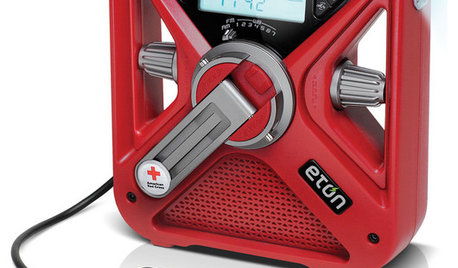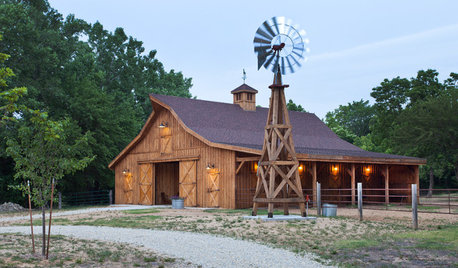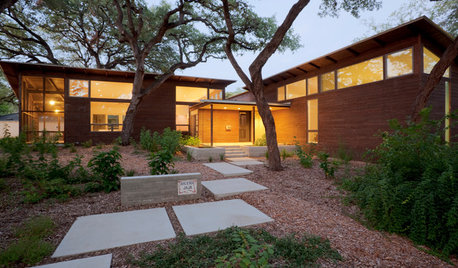Sump Pump - Battery Backup
rmo87
16 years ago
Featured Answer
Sort by:Oldest
Comments (19)
zl700
16 years agolast modified: 9 years agozl700
16 years agolast modified: 9 years agoRelated Discussions
Basement waterproofing quote-NJ
Comments (4)Have I got this straight? After excavating around the entire perimeter of your basement, all they're going to do to the wall is reparge it (cement) then cover it with a vapour barrier (6 mil plastic). (I assume that's where they intend to put the plastic.) If you want to keep water out of your basement, this is inadequate. Ideally, if the exterior wall is cleanable, it should be covered in a liquid waterproofing membrane, not a layer of cutback asphalt. The cove to wall joint--a common source of leakage--should be packed with a waterproofing material from one of the crystalline waterproofing manufacturers--then the wall should be wrapped in a waterproof foundation membrane, such as Delta brand (there are a number of other manufacturers). The new perimeter drain covered in free-running gravel is fine. Treating your interior wall with a mould containment material does nothing to keep water out of the basement. BTW, you should have a dehumidifier running to keep humidity below 50rh. Here is a link that might be useful: Delta Membrane...See MoreMeeting Builder What about out requirements?
Comments (11)Our GC had a wonderful exercise for us. His assignment even before we met was to have DH & me write out our top 20 items/ideas for the house (in order of importance). We did this seperarately w/o knowing each other's top 20. We then brought this list to GC on our first meeting. This enabled him to get the big picture. We also took these lists to the architect. Along with this list, was a photo of what we desired & a layout we thought we liked. As the process has developed, all of our smaller, nitpicky items have come out. GC has appreciated the thought process that I've put into it all. He said it has made everything move smoothly. In the end, I will have less daily choices to make. Although I did SO much research prior to all of our meetings, I have welcomed GC's ideas & knowledge, as well. Afterall, we are hiring him for his skills, knowledge, & expertise. He has been doing this 30+ years & I have only just recently begun this process. I definitely would not go into this seeming like a total know-it-all or you will make GC's life quite unpleasant. Also, in all honesty, about 90% of our desires for our home, GC had already planned for, so I would really be looking for the best GC you can find....See MoreQuestions About Battery Backup for Sump Pump
Comments (10)Here's an off the wall solution. A friend of mine lived in an area where there were almost no power outages, even in bad storms. They've experienced maybe 4 outages in 25 years. However, if there was an outage, it might last only 30 minutes at most. In that 30 minutes, their sump would fill up and water would start flowing into the basement. The expense of a full fledged back up system wasn't that justifiable. He kept a oil drum crank handy just in case but wanted something less labor intensive. He was more concerned about the few times a hurricane might come through and, just something as an alternate course of action. We picked up a Xantex 2000 watt inverter with a 4000 watt surge capability, a marine battery and a small solar panel to keep the battery float charged. During one heavy torrential down pour, we put it to the test. We unplugged it from the power and plugged it into the inverter. It worked great for over an hour (when the rain stopped.) Just knowing he had an alternative was good enough for him. With a little more work with a relay, we could have made the system automatically switch over. The good part is, when the battery starts to run down due to long use, you just hook up jumper cables to a car or tractor and you're back in business. We also tested it on his pellet stove and it worked great. Of course this is an "un-packaged" UPS. The cost was around 175 bucks total. He has an area where he uses a hedge trimmer and needs 150 foot extension cord to get to it. He took the setup out to the location and used his hedge trimmer with it and needless to say, it worked great. I personally think running the extension cord would have been easier but I mention all the other uses as another example of the setups' capabilities where it can be applied to other emergency or short term uses as well....See More12 volt backup battery for sump pump
Comments (1)William Darden has covered battery care for a very long time. Here is a link that might be useful: Lots of info...See Morermo87
16 years agolast modified: 9 years agozl700
16 years agolast modified: 9 years agormo87
16 years agolast modified: 9 years agozl700
16 years agolast modified: 9 years agocarmel_corn
16 years agolast modified: 9 years agozl700
16 years agolast modified: 9 years agocarmel_corn
16 years agolast modified: 9 years agozl700
16 years agolast modified: 9 years agotom2112
16 years agolast modified: 9 years agolazypup
16 years agolast modified: 9 years agozl700
16 years agolast modified: 9 years agolazypup
16 years agolast modified: 9 years agozl700
16 years agolast modified: 9 years agozl700
16 years agolast modified: 9 years agojamesbelle_hotmail_com
15 years agolast modified: 9 years agopjb999
15 years agolast modified: 9 years ago
Related Stories

DISASTER PREP & RECOVERYMore Power to You: How to Pick the Right Generator
If your home's electricity goes, don't let it take your necessities with it — keep systems running with this guide to backup power
Full Story
HOME TECHBetter, Smarter Smoke Detectors Push All the Right Buttons
No more bashing in that smoke detector with a broomstick at 3 a.m. — if you haven't already yanked it out. Welcome the new, civilized breed
Full Story
HOME TECH7 Ways to Charge Up and Connect After Disaster
Products and tips for communicating and keeping essential items running till the power's back on
Full Story
TRADITIONAL STYLEFarmhouse Style: Windmill Power Comes Around Again
Windmills helped win the West. Today these hardworking features are still winning our hearts
Full Story
HOME TECHSmall Solar: Big Home Tech Trend in the Making
New technology enables everyday household objects to power themselves by harnessing natural light
Full Story
GREEN BUILDINGMeet a High-Tech Home That Monitors Itself
Energy vampires have nowhere to hide in this LEED Platinum home, as energy efficient as it is architecturally beautiful
Full Story
LIFEHow to Prepare for and Live With a Power Outage
When electricity loss puts food, water and heat in jeopardy, don't be in the dark about how to stay as safe and comfortable as possible
Full Story
GREEN BUILDINGOff the Grid: Ready to Pull the Plug on City Power?
What to consider if you want to stop relying on public utilities — or just have a more energy-efficient home
Full Story
HOUSEKEEPING10 Problems Your House May Be Trying to Show You
Ignore some of these signs and you may end up with major issues. We tell you which are normal and which are cause for concern
Full Story
GREEN BUILDINGLet’s Clear Up Some Confusion About Solar Panels
Different panel types do different things. If you want solar energy for your home, get the basics here first
Full Story




zl700